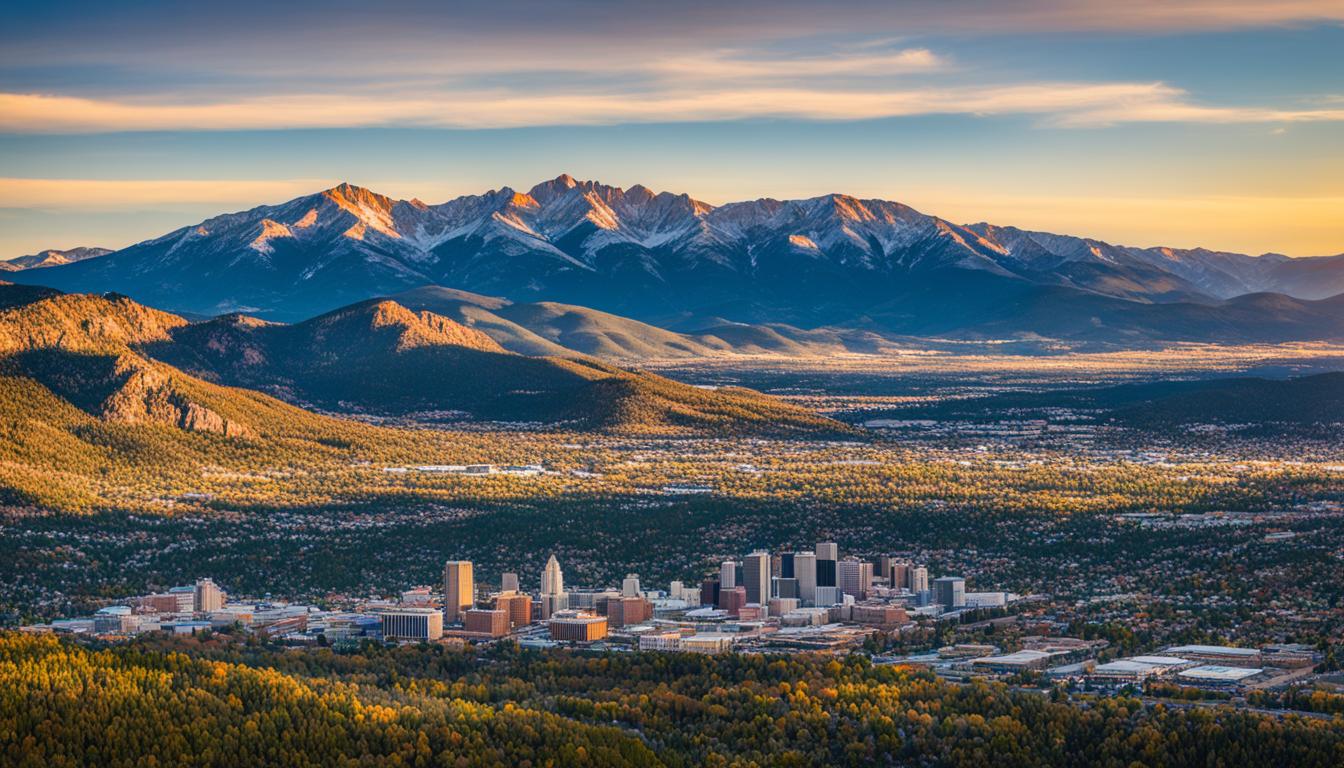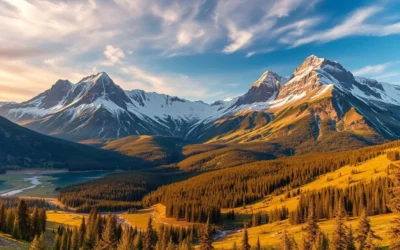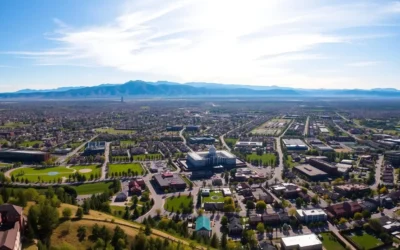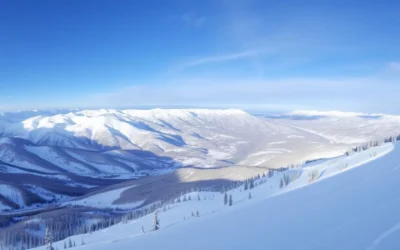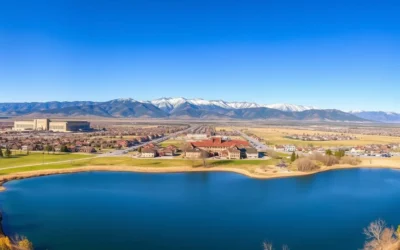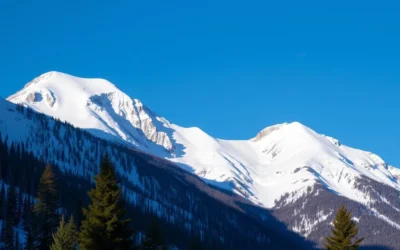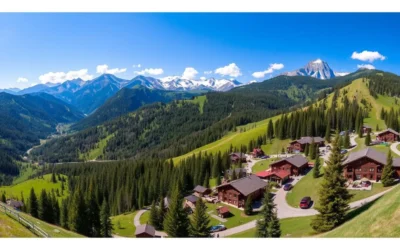✓ Accommodations ✓ Flights ✓ Rental Cars ✓ Tours & Activities
Are you planning a trip to Colorado Springs, Colorado? Wondering when the best time to visit is for optimal weather conditions? Well, you’re in luck! In this article, we’ll dive into the climate of Colorado Springs and explore the ideal months for a weather-savvy trip. Whether you’re a nature enthusiast, adventure seeker, or simply looking for a relaxing vacation, understanding the weather patterns can make all the difference in planning your perfect getaway.
Key Takeaways:
- Colorado Springs experiences moderate temperatures year-round.
- The best months to visit are spring (March, April, May) and fall (September, October).
- Summer can be hot and crowded, while winter can be cold and snowy.
- Packing layers and being prepared for changing weather conditions is essential.
- Consider the weather conditions and choose the best time for your Colorado Springs adventure.
Colorado Weather Conditions
Colorado experiences a unique climate with distinct weather conditions throughout the year. Whether you’re planning a visit to Colorado for outdoor adventures or scenic landscapes, it’s essential to understand the state’s diverse weather patterns. Here’s a breakdown of Colorado’s weather conditions, including temperature, precipitation, and the four seasons.
Temperature
The temperature in Colorado varies depending on the season and location. Average high temperatures range from the 50s to 70s degrees F, offering comfortable weather for outdoor activities. Average low temperatures range from the 30s to 50s degrees F, providing relatively mild evenings.
Precipitation
Precipitation levels differ across the state, influenced by both elevation and location. Colorado experiences an average of 10 to 20 inches of precipitation annually. This includes rainfall in lower elevations and snowfall in higher elevations, particularly in the mountainous regions.
Seasons
Colorado has four distinct seasons that offer different experiences throughout the year:
- Spring: Spring in Colorado brings mild temperatures and occasional fluctuations. The mountains may still receive snowfall until May, while the metro areas might experience fog and freeze alerts.
- Summer: Summers in Colorado are hot and dry, with temperatures often exceeding 100 degrees F in some areas. Afternoon thunderstorms are common, bringing high winds, torrential rain, thunder, lightning, and hail.
- Fall: Fall in Colorado is characterized by mild temperatures and the vibrant changing colors of the leaves. It’s an excellent time to explore the picturesque landscapes and enjoy outdoor activities with comfortable weather.
- Winter: Winter in Colorado can be cold and snowy, especially in the mountainous areas. Temperatures range from the low 10s to the high 30s degrees F. This season attracts winter sports enthusiasts to the state’s renowned ski resorts.
Tips for Planning Your Trip
When planning your trip to Colorado, keep these weather conditions in mind:
- Research the weather forecast for the specific time and location of your visit.
- Bring appropriate clothing and gear based on the expected weather conditions.
- Pack layers to adjust to temperature fluctuations, especially during the spring and fall seasons.
- If visiting during summer, carry sunscreen, a hat, sunglasses, and a rain jacket to protect against intense sun and thunderstorms.
- For winter trips, prepare for cold temperatures by dressing warmly and bringing winter essentials like gloves, hats, and boots.
- Check road conditions and be prepared for possible travel delays during winter due to snowstorms.
Northern Colorado
Located in the northern region of Colorado, Northern Colorado encompasses cities like Boulder and Fort Collins. This area experiences cooler temperatures year-round compared to other parts of the state, making it a popular destination for those seeking a break from the heat.
In winter, temperatures in Northern Colorado range from the low 30s to the low 60s degrees F, providing a pleasant and refreshing atmosphere. The cooler temperatures allow for outdoor activities like skiing, snowboarding, and snowshoeing in the nearby mountains.
During the summer months, Northern Colorado sees temperatures ranging from the high 40s to the low 90s degrees F. This comfortable range allows for enjoyable outdoor exploration, from hiking in the picturesque Rocky Mountain National Park to biking along scenic trails.
Northern Colorado also receives a higher amount of snowfall compared to other areas of the state, with an average of 89 inches per year. This provides ample opportunities for winter sports and creates a beautiful winter wonderland.
Furthermore, the closer you get to Wyoming, the windier it gets in Northern Colorado. With its unique geographical location, the area experiences gusty winds, especially during certain seasons. Visitors should come prepared with layers and consider wind-resistant clothing when exploring the region.
“Northern Colorado offers a diverse array of outdoor activities and stunning landscapes. From the snow-capped peaks of the Rocky Mountains to the vibrant college town of Boulder, this region showcases the beauty of Colorado’s natural wonders.”
To help you plan your visit, here is a table summarizing the average temperatures and snowfall in Northern Colorado:
| Winter (°F) | Summer (°F) | Average Snowfall (inches) | |
|---|---|---|---|
| Boulder | Low 30s – Low 60s | High 40s – Low 90s | 81 |
| Fort Collins | Low 30s – Low 60s | High 40s – Low 90s | 97 |
With its unique climate, breathtaking scenery, and abundance of outdoor activities, Northern Colorado is a must-visit destination for those seeking a refreshing escape. Whether you’re exploring the lively streets of Boulder or immersing yourself in the vibrant culture of Fort Collins, Northern Colorado offers a captivating experience throughout the year.
Southern Colorado
Southern Colorado, including cities like Colorado Springs, Pueblo, and Trinidad, experiences moderate temperatures year-round. In winter, temperatures range from the high 10s to the upper 50s degrees F, and in summer, temperatures range from the low 50s to the mid-80s degrees F.
While snowfall can accumulate more in Colorado Springs during winter, cities further south experience less snowfall.
The area does get windy during the summer and fall months.
It’s important to pack accordingly and be prepared for changing weather conditions in Southern Colorado.
Eastern Colorado
Eastern Colorado, which serves as the gateway to the eastern part of the United States, experiences temperature fluctuations throughout the year. In winter, temperatures range from the low 20s to the mid-50s degrees F, while in summer, temperatures range from the low 40s to the low 90s degrees F.
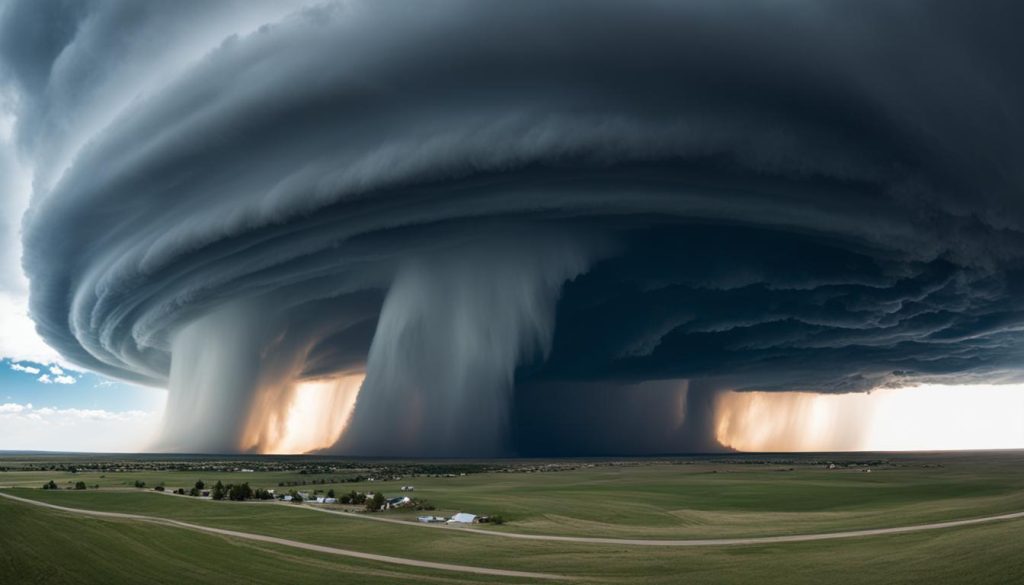
This part of the state is more prone to tornadoes, wind, and hail during the summer thunderstorm season. It’s important to be aware of potential severe weather when traveling in Eastern Colorado.
Western Colorado
Western Colorado offers a unique climate and stunning landscapes, thanks to its beautiful Rocky Mountain backdrop. The region is a popular destination, known for its ski resorts, outdoor activities, and picturesque vistas. From winter to summer, Western Colorado experiences varying temperatures and snowfall, providing different experiences throughout the year.
In winter, temperatures in Western Colorado range from the low 10s to the high 30s degrees F, providing ideal conditions for skiing and snowboarding. The Rocky Mountains receive consistent snowfall, creating a winter wonderland for enthusiasts and adventure seekers alike. With a variety of ski resorts to choose from, such as Aspen, Vail, and Telluride, visitors can enjoy world-class slopes and breathtaking views.
During the summer, temperatures in Western Colorado range from the low 30s to the upper 70s degrees F, offering pleasant weather for outdoor activities. Whether it’s hiking through the scenic trails, kayaking in crystal-clear lakes, or simply taking in the majesty of the Rocky Mountains, the region provides endless opportunities for exploration and adventure.
It’s important to pack appropriate gear for winter conditions, including warm clothing, waterproof jackets, and sturdy boots. In the summer, light layers, sunscreen, hats, and comfortable shoes are essential. Regardless of the season, Western Colorado promises an unforgettable experience amidst its natural splendor.
Spring in Colorado
Colorado Springs boasts a mild spring season with fluctuating temperatures, offering a unique experience for travelers. While the metro areas may experience fog and freeze alerts, the mountains can still see snowfall well into May. Spring in Colorado brings a mix of hot and cold weather, with temperature fluctuations occurring within a span of 12 hours. It’s essential to be prepared for these changing conditions by packing layers of clothing.
When planning for a spring trip to Colorado, it’s crucial to have a mix of warm and cool clothing in your suitcase. This ensures that you’ll be comfortable no matter the temperature fluctuations. Consider packing lightweight t-shirts and shorts for warmer days, as well as long-sleeved shirts, jeans, and a light jacket for cooler temperatures.
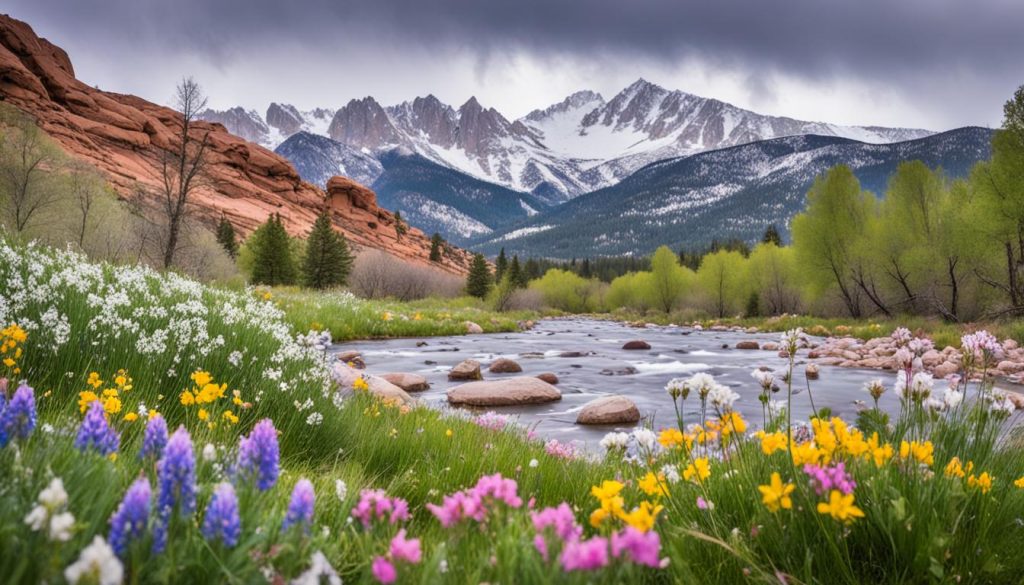
The Beauty of Spring in Colorado
Spring is a beautiful season in Colorado, with nature coming to life. The snow-capped mountains contrast with the vibrant colors of blossoming flowers, creating a picturesque landscape. Whether you’re hiking in the Rocky Mountains or exploring the scenic trails, the breathtaking views will leave you in awe.
“Spring in Colorado is a magical time when you can witness the transition from winter to summer. The changing weather and stunning scenery make it a must-visit destination for nature lovers.”
– Emily Johnson, Travel Enthusiast
Another highlight of spring in Colorado is the abundance of outdoor activities. From kayaking in clear mountain lakes to biking through scenic trails, there’s an adventure waiting for everyone. Just make sure to check the weather forecast and plan accordingly to make the most of your time in this beautiful state.
| Temperature | Weather Conditions | Packing Tips |
|---|---|---|
| 40°F – 70°F | Fluctuating temperatures; occasional snowfall | – Pack layers of clothing – Carry a light jacket for cooler evenings – Don’t forget sunglasses and sunscreen for sunny days |
| 70°F and above | Warmer days; potential for afternoon showers | – Wear lightweight, breathable clothing – Carry a rain jacket or umbrella for unexpected rain showers – Stay hydrated and protect yourself from the sun |
By being prepared and packing accordingly, you can fully enjoy the beauty and versatility of spring in Colorado. Soak in the stunning landscapes, embrace the changing weather, and create unforgettable memories in this captivating destination.
Summer in Colorado
Summer in Colorado is a season of dry heat and breathtaking beauty. With temperatures often exceeding 100 degrees F in some areas, the summer sun can be intense. However, along with the heat, comes the occasional afternoon thunderstorm that brings a refreshing change to the landscape.
Afternoon thunderstorms in Colorado are a regular occurrence during the summer months. These storms bring high winds, torrential rain, thunder, lightning, and even hail. They can roll in quickly and transform the sunny skies into a dramatic display of nature’s power.
To fully enjoy and prepare for your summer adventure in Colorado, here are some essential packing tips:
- Pack sunscreen with a high SPF to protect your skin from the intense sun. Apply it generously and frequently, particularly if you plan on spending time outdoors.
- Don’t forget to bring a hat and sunglasses to shield your eyes from the bright sunlight. They will provide much-needed shade and help prevent any glare.
- A rain jacket is a must-have item to protect yourself from sudden downpours during thunderstorms. Make sure it’s lightweight and waterproof.
- When dressing for the Colorado summer, opt for lightweight, breathable clothing. Choose fabrics that allow air to circulate, helping to keep you cool and comfortable.
- Carrying a water bottle is essential to stay hydrated in the dry heat. Make sure to drink plenty of fluids throughout the day, especially when engaging in outdoor activities.
By following these packing tips, you’ll be well-prepared to embrace the Colorado summer weather and fully enjoy everything this beautiful state has to offer. From scenic hikes to outdoor festivals, you’ll have an unforgettable summer adventure in the scenic landscapes of Colorado.
Conclusion
When planning a trip to Colorado Springs, it’s crucial to carefully consider the weather conditions and choose the best months for your visit. Spring and fall are the prime seasons for a weather-savvy trip, as they offer pleasant temperatures and smaller crowds. These seasons allow you to explore the beauty of Colorado Springs without the summer heat or winter snow.
While summer is popular among tourists, it can be hot and crowded, making it less ideal for those seeking a more tranquil experience. On the other hand, winter in Colorado Springs can be cold and snowy, particularly in the mountainous areas. It’s important to pack the appropriate clothing and gear to stay comfortable during your visit.
By taking the climate and weather conditions into account, visitors can optimize their travel experience and make the most of their trip to Colorado Springs. Whether you plan to indulge in outdoor activities, explore the city’s vibrant culture, or simply enjoy the breathtaking landscapes, selecting the best months for your visit will ensure an unforgettable and weather-friendly adventure.
FAQ
When is the best time to visit Colorado Springs?
What is the weather like in Colorado?
What can I expect in Northern Colorado?
How is the weather in Southern Colorado?
What should I know about Eastern Colorado?
What is the weather like in Western Colorado?
What is the weather like during spring in Colorado?
How is the weather during summer in Colorado?
What are the best months for a weather-savvy trip to Colorado Springs?
The above is subject to change.
Check back often to TRAVEL.COM for the latest travel tips and deals.
Here are some Tours & Sightseeing suggestions that might pique your interests!
